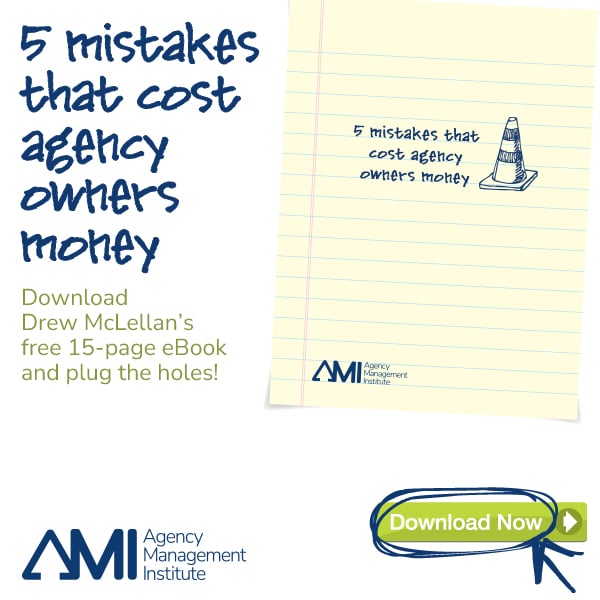Earlier this week, we kicked off a conversation about why agencies find themselves relegated to vendor status. If you remember, we identified 3 causes.
- The economy — workforce reductions, budget cuts and overall fear (out of your control)
- Agencies willingness to behave like a vendor just to get the project (within your control)
- Agencies hiring “nice” account executives who are order takers rather than smart business people (within your control)
In this post, we’re going to look at what you can do to change your mindset (and choices) so you don’t look like a vendor to prospects and clients. None of us like the word “vendor.” Vendors sell stuff. They sell umbrellas on the beach, hot dogs on Time Square and truckloads of parts. But the truth is — many agencies behave like a vendor. They:
- Charge by the hour rather than use value pricing
- They set their prices based on the “stuff they make” like brochures and websites
- They talk tactics, rather than strategies
If you recognize yourself, even a little bit, in that description — here are some things to consider as you wrestle with getting away from the vendor label.
Take business with your prospects and clients: Don’t limit your interest or your conversations to marketing or advertising. Talk about their pricing strategies, how they go to market with their product/service, sales goals and even operations. Your job is to stick your nose into their business and help ferret out solutions that can change the game. You want to identify and talk about the metrics that matter to your prospect or client.
Price like an advisor, not a vendor: Vendors price by the pound, the item and by the hour. Advisors price by the value they deliver. If you haven’t read Ron Baker’s book called Implementing Value Pricing, I highly recommend it. He outlines not just why you should be value pricing but how to put it into practice.
You look, smell and behave like you work at their place: When agencies have mixed agendas or allow themselves to have a conflict of interest (be it with another client or the agency versus the client’s best interest) – they aren’t acting like an advisor. The whole vendor, squeeze them down to the last penny, is because agencies have behaved a little like used car salesmen for too long. When you help them make the best choices for their business — even if they aren’t always the best choices for yours, you will earn their trust. And in the end, that is in your best interest.
Be transparent in all financial dealings: Fully disclose, before the prospect asks, how you handle media commissions, mark ups, and any other financial dealings that touch their account. Again — clients feel like they’re constantly playing some sort of shell game with their agencies — so they’re always on guard. You remove that tension in the relationship if you just talk straight up about the money stuff.
Don’t try to be an expert at everything: Today’s agencies don’t have to be able to do it all. They have to be able to lead the team that does it all. There’s a difference. Clients are smart enough to know that an agency of even 30 staffers can’t do it all in house. Keep your strategists and business thinkers in house. Let them drive the marketing strategy. And then go find the very best partners who specialize in that strategy. Clients love an agency with a full digital Rolodex and lots of connections. It means they get the specialists when they need it. Again — that’s doing what’s best for the client. Which is what an advisor gets paid to do.
We’ll dig into each of these topics over the next month or so…but for now, take a good look in the mirror. If you see a vendor staring back at you, you know what to do.







